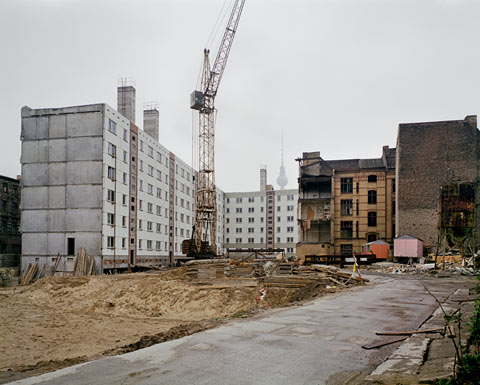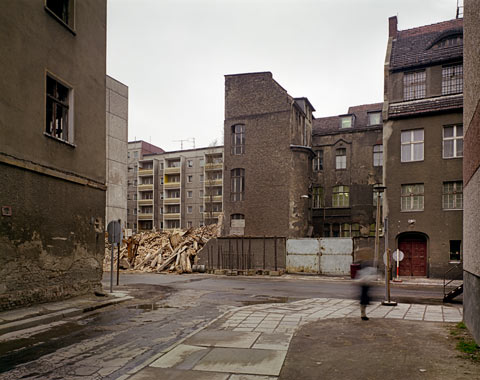Continuing with photographs I made on several walks through Berlin Mitte before the Wall came down. The most obvious thing one noticed when crossing the border to East Berlin was the profound devastation still visible from World War II 42 years after the fact. The DDR had taken on a number of big urban renewal projects, especially along Frankfurter Allee, which was temporarily called Stalin Allee. Much of Mitte, however, the center of the city closest to the Wall, was largely untouched.
At the time of my photographs the East Germans were turning their attention to Mitte, and considerable demolition and rebuilding was underway. Fortunately, the fall of communism put a stop to the shoddy construction filling the gaps left by the war or by the wrecking ball.
Walking around East Berlin with the view camera I felt more conspicuous than usual–I doubt that there were any view cameras in use in the DDR in those days–and I was given a wide berth by nearly everyone. One man, however, in longish hair and slightly unkempt appearance came up to me and asked what I was up to. I attempted to explain in my limited German that I was making urban landscape photographs.
He asked whether I was interested in social/political issues as a photographer, and I denied having any particular ax to grind along those lines. He then suggested that photographing urban landscapes could, in fact, encompass all those issues, even as the images stylistically presumed to remain neutral. I felt utterly unmasked at that point, not simply in what I was doing in East Berlin, but what I was doing in general as a photographer.

